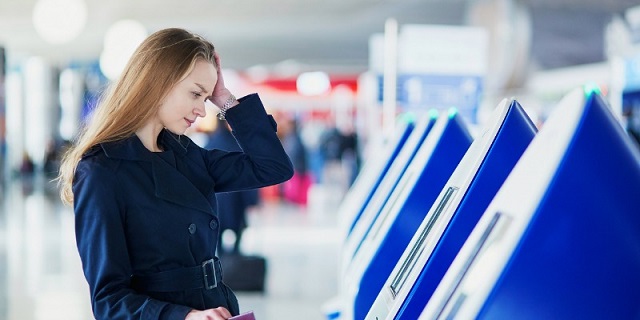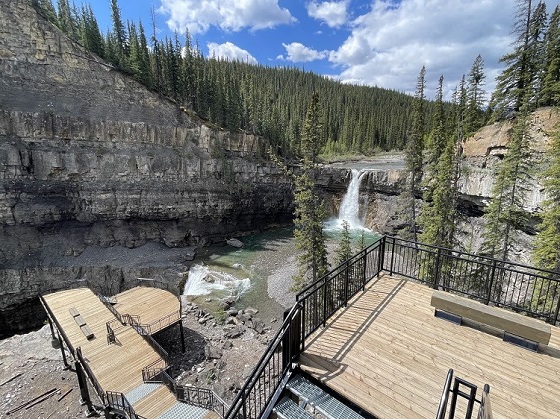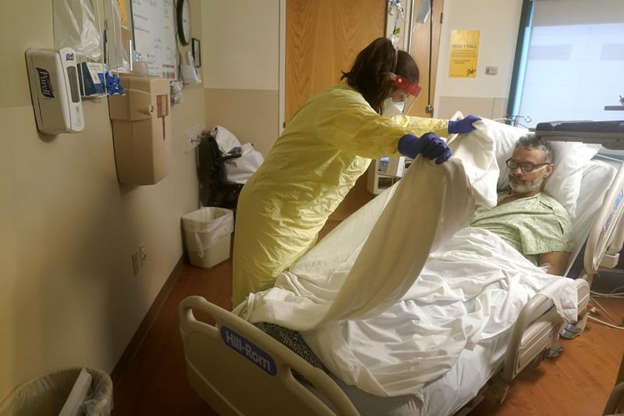Travel
Todayville Travel: I survived the Road to Hana

I survived the Road to Hana! by Gerry Feehan
“…I’ve done enough beach holidays to fill a leaky bucket. Watching overweight tourists in undersized beach wear (throngs in thongs) has long since lost its lustre…”
The village of Hana is located on the quiet ‘windward’ side of Maui. Windward is a euphemism for rainy. Precipitation here averages three hundred inches a year. No person of sound judgment would live in a place where an inch of rain in an afternoon is considered a light drizzle.

Hana is definitely on the wet side of Mau
Most tourists endure the gruelling drive to Hana as a day trip, rising early to negotiate the eighty-five kilometer journey with its six-hundred-plus curves, 54 narrow bridges and frustratingly slow traffic. They choke down a fish taco and lemon bar at a roadside food stand then snake back at a snail’s pace in darkness to the dry leeward side of the island, collapsing into bed at a fancy seaside resort in Kaanapali or Wailea, a checkmark on their Hawaiian holiday agenda firmly ticked off.
“… But as is often the case when one ventures off the beaten track, our choice was serendipitous…”
Some time ago a clever marketer began selling T-shirts with the caption: “I survived the road to Hana!” It really is a challenging drive, so that intrepid shirt salesman is probably now quite wealthy.
I’ve done enough beach holidays to fill a leaky bucket. Watching overweight tourists in undersized beach wear (throngs in thongs) has long since lost its lustre. We were looking for a change, an out-of-the-way Hawaiian adventure. There’s hardly a soul living out Hana way. So we decided to spend a week with the free spirits and addled Vietnam vets.
My search for accommodation in Hana was careful and meticulous. Not. I booked the first place I found on the net: Entabeni Cottage. Click here for their website. But as is often the case when one ventures off the beaten track, our choice was serendipitous.

Outdoor shower anyone?
We had absolute privacy, from the gorgeous ocean view to the solar-heated outdoor shower. The north wall of the cottage consists entirely of glass doors. Each morning we awoke to a 180-degree view of the ocean and the barely discernible sound of waves crashing on the rocky shore hundreds of meters below.
“Entabeni means the place on the hill in Zulu,” explained owner Terry Kristiansen as she toured us in morning sunshine through the horticultural wonder of her amazing garden. We meandered amongst gigantic Cook pine, African tulip and mango trees. She and her husband Michael maintain a tropical nursery. I tried not to blush when she mentioned that some of the flowering plants were viviparous.

Green eggs and …
Two dogs, a cat, a goat, a multitude of chickens and a raucous gaggle of guinea fowl followed our progress. Terry’s hens lay green eggs – organically of course. Each morning our doorstep was laden with a fresh coop-full of Entabeni’s emerald bounty.
Our Hana booking was for seven days. Perhaps a mistake? There’s purportedly nothing to do there. (A renowned friend of mine, Dr. D, who is intimately familiar with Maui, asked bluntly, ”You’re going to Hana? For a week?”) So, soon after arrival, we decided to scout out some adventure. We meandered into town and chatted up some locals:
“What do you do out here in Hana?” I asked Tyler, a mixed-blood Hawaiian of Portuguese pedigree.

Tail of a whale – or whale of a tale?
“Not much” he replied, “sometimes we fish… when it’s not rough.” He looked ruefully out to sea, as whitecaps roiled in a sub-tropical winter storm. A lone humpback whale breached in the distance. I concluded that there’d be no fishing on this trip.
“Sometimes we drive into town and pick up mail,” offered his cousin, who was high on friendliness but low on wisdom teeth. “And of course there’s the big meetin’ tonight at the church to vote on the offal plebiscite.”
I’m not sure what offal is but it sounds terrible. I was about to excuse myself, vacate the cottage and head for dry, civilized parts of Maui when Tyler added: “What we really like is hunting wild boar. We’re going out tomorrow morning. You’re welcome to come along if you don’t mind getting a little muddy.”
My expertise as a hunter is renowned. I once shot a gopher – grazing it only slightly but deeply wounding its pride; and I’ve caught two fish – three if you include the goldfish I netted in my backyard pond. Still I figured ‘when in Rome’ and agreed to meet them in the morning at mile marker 26, near an abandoned, burnt-out pickup truck.

Mile 26 marks the meeting spot.
“It’s blue,” offered my newfound toothless friend, perhaps to ensure I didn’t wait by a red, abandoned burnt-out pickup truck at mile marker 26.
Terry drove me down at 7am sharp. We hadn’t waited more than a minute when up rolled a pineapple-yellow Ford crew-cab, loaded to exploding with Hawaiians, hunting dogs and guns. The truck, high on its suspension, teetered on two wheels before finally rocking to a stop. The occupants piled out and cracked a Budweiser. The humans that is. The dogs were content to slurp at the slough that had formed around the old blue pickup during the previous evening’s downpour.
Like most flora and fauna in the Hawaiian Islands, the wild pigs are alien. These invasive, destructive critters are a cross between the small Polynesian variety brought to the islands by the first human inhabitants a thousand years ago and larger European pigs imported in the 1800’s; the result is the large, black, elusive, ornery beasts that Hawaiians love to hunt.
By 7:30 a.m. we were a kilometre deep in the rainforest, up to our knees in muck. The dogs had sniffed out a promising dig. Fresh tracks confirmed that a large sow was nearby. Three hours later we were still zigzagging back and forth over, around and through jungle streams laced with invasive strangler figs and giant eucalyptus trees. The pigs were clever. On a couple of occasions the dogs bolted excitedly into the impenetrable jungle on a promising scent but near noon, with the tropical sun beating down and steam rising in the heated rainforest, we admitted defeat and called it a day.

‘Hurt’ is not an option in here.
“What happens if you get injured in here?” I asked Tyler as we began the slow hour-long crawl back to the pickup.
“Hurt is not a’ option,” he answered, tugging at a rubber boot sunk deep in a wallow of mud.
Back at the truck, with the last of the morning Budweiser, we conceded the feral pig’s victory over man.

Hike to the seven sacred pools.

Rainbow Eucalyptus
“Why don’t you and your bride come down to our place tomorrow for Super Bowl,” offered Tyler, “there’ll be plenty of grind and bevvies.”
I assumed he meant food and drink.
We arrived fashionably late with a plate full of devilled (green) eggs and a cooler full of cold ones. After the game (quite exciting – not a Superbore) I asked if it would be okay were I to bring out my ever-present ukulele from its coincidental resting place in the trunk of the rental car.
“That’d be great bra’,” said Tyler, using the term of endearment that forms every second word of Hawaiian pidgin vocabulary.
When I returned, a slack guitar and four ukuleles were jamming on the lanai. Uncle Bobby (whose relationship with our hosts I never did quite grasp) was pouring himself a stiff concoction, lighting a smoke and settling into an over-worn armchair for what turned out to be a long night of music and laughter.

Warm grind, cold bevvies – and a hot uke!
Later in the week, as we strolled Hana’s streets locals were honking, waving “hey bra’’” and inviting us for grind. Apparently we ‘haole’ (white people from another place) were a hit.
In closing I offer seven recommendations on how to pass a week in Hana:
- Walk awestruck as Terry Kristiansen guides you through the horticultural wonder that is Entabeni Cottage (whilst chickens peck at your progress);
- Shower outdoor at night in the Entabeni rain;
- Crawl on all fours for hours through steep, muddy rainforest with a pack of men, dogs and Budweiser on the hunt for wild boar;
- Enjoy a candle-lit repast of raw sashimi-grade ahi tuna, followed by lightly seared opaka-paka, served with a glass of white wine by your favorite fellow hominid;
- Get lit up with Hawaiian locals at a ukulele jam;
- Waste a day by shooting close-up photographs of the incredible rainbow eucalyptus trees;
- Snorkel at a ‘clothing optional’ black sand beach, oblivious to the nudity of those around you;
- Hike the seven sacred pools to Waimoku Falls or traverse the jagged lava cliffs of Waianapanapa State Park.

Can’t see the forest for the bamboo.
Did I say seven things? I guess there’s more to do in Hana than first meets the eye. So get off the beaten track, out of the th(r)ong and seek some adventure.
Gerry Feehan QC practised law in Red Deer for 27 years before starting his second life as a freelance travel writer and photographer. He says that, while being a lawyer is more remunerative than travel writing, it isn’t nearly as much fun. When not on the road, Gerry and his wife Florence live in Red Deer and Kimberley, BC. Todayville is proud to work with Gerry to re-publish some of his most compelling stories from his vast catalogue developed over more than a decade of travel.

Gerry Feehan
Click to read more excellent stories by Gerry Feehan.
Business
Here’s why your plane ticket is so expensive

From the Fraser Institute
By Alex Whalen and Jake Fuss
While the strike by WestJet mechanics lasted only a few days, many Canadian air travellers faced long delays and cancelled flights. More broadly, according to the Canadian Transportation Agency, customer complaints have hit an all-time high.
Yet many dissatisfied travellers likely don’t realize that Ottawa heavily contributes to their frustrations. Let’s look at the various ways federal policies and laws make air travel worse in Canada.
First, federal laws insulate Canada’s airlines from competition. Foreign airlines are subject to highly restrictive “cabotage” laws which, for example, dictate that foreign airlines cannot operate routes between Canadian cities. At the same time, foreign investors are forbidden from owning more than 49 per cent of Canadian airlines. By restricting international participation in the Canadian air travel market, these laws both deprive Canadian consumers of choice and insulate incumbent airlines from competition. When consumers have more choice, incumbents have a greater incentive to improve performance to keep pace with their competitors.
Second, a wide array of taxes and fees heavily influence the cost of airline tickets in Canada. Airport improvement fees, for example, average $32.20 per departing passenger at airports in Canada’s 10 largest markets. In contrast, airport improvement fees in the United States cannot exceed $4.50. And last year the Trudeau government increased the “air travellers security charge” by 32.85 per cent—this fee, which now ranges from $9.94 to $34.82 per flight, is higher in Canada than the U.S. across all flight categories. On the tax front, in addition to fuel taxes including the federal carbon tax, the federal excise tax on unleaded aviation gasoline in Canada is 10 cents per litre compared to 6.9 cents per litre in the U.S. And the U.S., unlike Canada, does not apply sales taxes to aviation fuel.
Third, air travel is a heavily regulated sector. Federal legislation generates thousands of provisions airlines must follow to operate legally in Canada. Of course, some regulation is necessary to ensure passenger safety, but each regulation adds administrative and compliance costs, which ultimately affect ticket prices. To lower the cost of air travel, the federal government should reduce the regulatory burden while maintaining safety standards.
Lastly, the ownership model of Canada’s airports results in a yearly transfer of rent to the federal government. The federal government used to own Canada’s national system of airports until they were transferred to private not-for-profit corporations in the early 1990s. However, these airports must still pay rent to the federal government—nearly half a billion dollars annually, according to the Canada Airports Council. As with the other examples listed above, these costs are ultimately passed on to consumers in the form of higher ticket prices.
While a precise estimate is difficult to obtain, various government policies, taxes and fees comprise a large share of the cost of each airline ticket sold in Canada. With complaints from travellers at all-time highs, the federal government should reduce the regulatory burden, increase competition, and lower fees and taxes. Policy reform for air travel in Canada is long overdue.
Authors:
Alberta
Just in time for Canada Day weekend! Crescent Falls ready to be enjoyed again

The new staircase structure and viewing platform are among many upgrades that visitors can look forward to at the reopening Crescent Falls Provincial Recreation Area. (Credit: Alberta Parks).
The popular Crescent Falls Provincial Recreation Area reopens following a significant capital investment to improve visitor safety and experiences.
Crescent Falls Provincial Recreation Area is ready to welcome visitors back to enjoy one of the most remarkable, accessible waterfall viewing opportunities in Alberta. The upgrades at Crescent Falls will help improve the park’s visitor experience. Guests can expect expanded parking, improved access roads, trails and day use areas, new and improved viewing areas to take in the falls and upgraded safety measures, including signage and wayfinding.
The Provincial Recreation Area (PRA) is reopening over the July long weekend after being closed since 2023. Visitors will notice increased public safety upgrades through additions such as new parking lots, a new stair structure to access the lower falls, new pedestrian trails, a new vehicle bridge to access the camping area and a viewing platform to enjoy the Crescent Falls.
“We are thrilled to welcome visitors back to Crescent Falls Provincial Recreation Area in time for the Canada Day long weekend. These additions will help visitors to safely access and enjoy the area’s natural beauty. Parks are for people and Alberta’s government will continue to invest in high-quality outdoor recreation opportunities.”
“Today marks a significant milestone for our community as we reopen the Crescent Falls Provincial Recreation Area following extensive upgrades. Our province is well known for its incredible natural beauty, and these improvements will make our backcountry more accessible and ensure that Albertans and those visiting our great province can continue to explore our stunning landscapes for years to come.”
-

 International2 days ago
International2 days agoPope Francis has died aged 88
-

 International2 days ago
International2 days agoJD Vance was one of the last people to meet Pope Francis
-

 2025 Federal Election1 day ago
2025 Federal Election1 day agoOttawa Confirms China interfering with 2025 federal election: Beijing Seeks to Block Joe Tay’s Election
-

 2025 Federal Election16 hours ago
2025 Federal Election16 hours agoBREAKING: THE FEDERAL BRIEF THAT SHOULD SINK CARNEY
-

 International2 days ago
International2 days agoPope Francis Dies on Day after Easter
-

 COVID-191 day ago
COVID-191 day agoNearly Half of “COVID-19 Deaths” Were Not Due to COVID-19 – Scientific Reports Journal
-

 2025 Federal Election1 day ago
2025 Federal Election1 day agoHow Canada’s Mainstream Media Lost the Public Trust
-

 Business2 days ago
Business2 days agoCanada Urgently Needs A Watchdog For Government Waste










